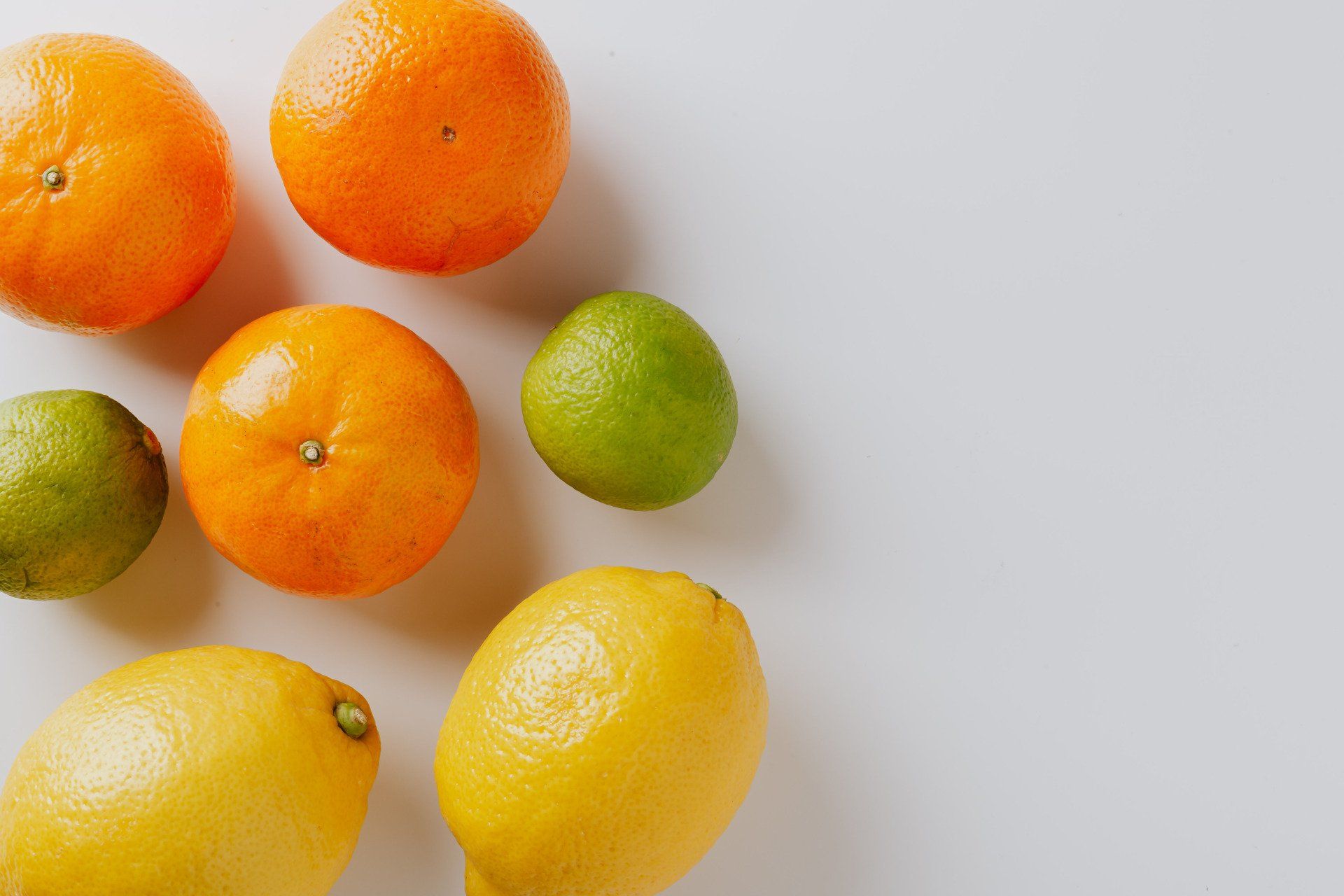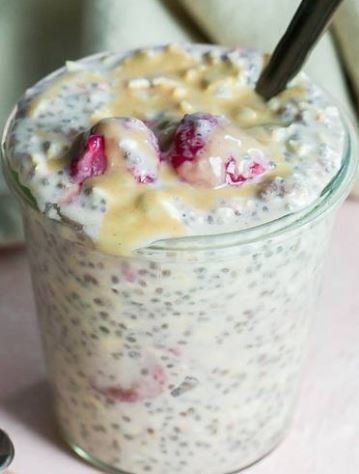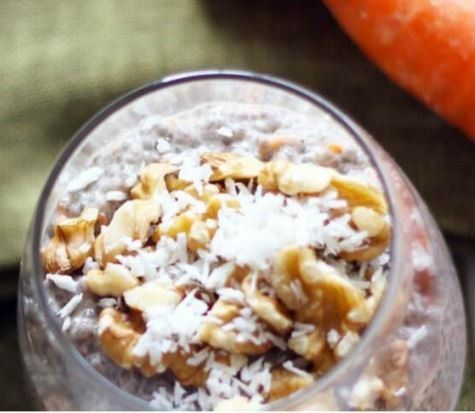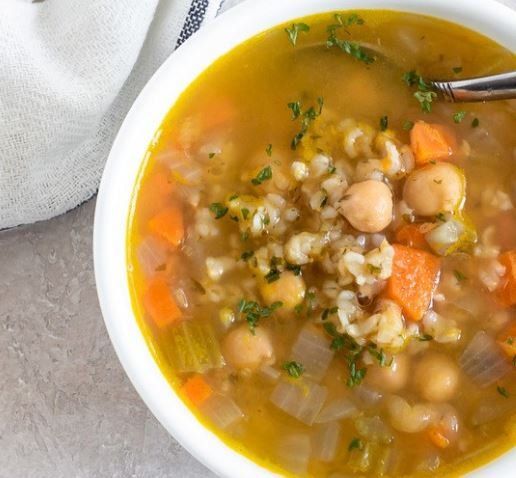CBD - What The Science Says
What is the endocannabinoid system?Source: https://fullscript.com/hcp/cbd-what-the-science-says
In order to discuss the therapeutic potential of CBD, it is first important to understand the role and function of the endocannabinoid system (ECS) within the body.
The endocannabinoid system is a lipid signaling system made up of enzymes, endogenous cannabinoids, and cannabinoid receptors. (8)(10)(19) The ECS is found within the central and peripheral nervous systems, where it is involved in regulating many body functions, (15)(19) as well as modulating the immune system, autonomic nervous system, and microcirculation. (19)
Within the ECS, the two primary cannabinoid receptors are known as type 1 (CB1) and type 2 (CB2). (16) These receptors are activated by endocannabinoids, which are endogenous lipid chemical mediators. (9) Found abundantly in the brain, (16) CB1 receptors appear to be directly involved in many functions, including behavior, emotions, cognition, motor control, homeostasis, (19) reproduction, sexual behavior, appetite, and energy balance. (16) CB1 receptors are also believed to play a role in the hypothalamic-pituitary-adrenal axis and hypothalamic-peripheral endocrine axes. CB2 receptors are found primarily in immune and blood cells, where they play an important part in regulating immune function. (16)
A promising new therapeutic approach
While our knowledge of the endocannabinoid system and its functions continues to grow, evidence supports the implication of the ECS in disease as alterations in endocannabinoid activity and receptor expression has been observed in a number of pathologies. (9)(10) Research has demonstrated that certain factors have the ability to prolong or inhibit the actions of endocannabinoids, (9) suggesting that modulation of ECS activity may be an effective therapeutic target for various health conditions, including:
- Atherosclerosis
- Cancer
- Glaucoma
- Hypertension
- Myocardial infarction
- Stroke
- Mood and anxiety disorders
- Movement disorders such as Parkinson’s and Huntington’s disease
- Multiple sclerosis
- Neuropathic pain
- Spinal cord injury
- Cancer
- Osteoporosis
- Obesity/metabolic syndrome (15)
The ability to modify endocannabinoid activity, by stimulating or inhibiting receptor binding, for example, offers the potential for exciting new therapies. (9)
Research has identified more than one hundred different cannabinoids in the Cannabis sativa plant called “phytocannabinoids’.
Cannabinoids and CBD
In addition to endogenous cannabinoids and synthetic cannabinoids, research has also identified more than one hundred different cannabinoids in the Cannabis sativa plant called “phytocannabinoids’. The two most abundant and commonly researched phytocannabinoids are tetrahydrocannabinol (THC) and cannabidiol (CBD). While both THC and CBD are thought to have therapeutic potential, unlike THC, CBD does not induce psychotropic effects. (12)(13) Similarly to endocannabinoids, CB1 and CB2 have been established as the primary molecular targets for phytocannabinoids, including CBD. As the modulation of CB1 and CB2 receptors have been shown to be involved in many body functions and pathologies, it is in this way that phytocannabinoids are believed to affect body functions. (16)
CBD: What is it good for?
While still in the early stages, there is a growing body of research aimed at examining the effects of CBD in the treatment of several health conditions, such as epilepsy, pain, and anxiety.
Epilepsy
CBD decreases the frequency of seizures and appears to be an effective tool in treating treatment-resistant epilepsy when used in conjunction with anti-epileptic medications. A double-blind, placebo-controlled trial examined the efficacy of CBD when used in conjunction with antiepileptic medication in patients with Lennox-Gastaut syndrome experiencing at least two seizures per week. Patients were given 20 mg/kg of oral CBD, 10 mg/kg of oral CBD, or a placebo for 14 weeks. Seizure frequency decreased 41.9% in patients receiving 20 mg of CBD, 37.2% in patients receiving 10 mg of CBD, and 17.2% in the placebo group. (7) Another study found similar results when CBD was administered as an adjunct to antiepileptic medications in patients with tuberous sclerosis complex (TSC)-related seizures. A 5mg/kg per day dose of CBD was administered, increasing 5 mg/kg per day every week to a maximum dose of 50 mg/kg per day. After three months, the median percentage change in seizure frequency decreased by 48.8%. Another open-label trial found that CBD was effective in decreasing the frequency of seizures in children and young adults with treatment-resistant epilepsy when used in combination with existing antiepileptic medications. (6)
In each of these trials, adverse effects were noted. Common adverse effects included somnolence/drowsiness, appetite reduction, diarrhea, ataxia, convulsions, and elevated liver aminotransferase concentrations. (6)(7)(11)
While these results demonstrate promise for the use of CBD in treatment-resistant epilepsy, further placebo-controlled trials are necessary. Research thus far has also been limited to the use of CBD as an adjunct to pharmaceuticals and the effects of CBD on its own has not yet been determined.
Pain
While many studies have highlighted the analgesic effects of vaporized cannabis (4)(22)(23), some studies demonstrate that CBD extract may provide similar benefits. CBD may improve chronic pain in kidney transplant patients. Seven patients between the ages of 58 and 75 received 50 mg to 150 mg of CBD twice per day over three weeks. Results demonstrated total pain improvement in two patients, partial improvement in four patients, and no change in only one patient. (5) Another study examined the short-term effects of CBD-enriched hemp oil in young girls with adverse drug effects (ADRs) following the human papillomavirus (HPV) vaccine. Administration sublingual CBD-rich hemp oil drops in doses of 25 mg/kg per day and 2-5 mg/ml CBD once a week up to a maximum dose of 150 mg/ml CBD per day resulted in significant reductions in pain and improvements in physical component, vitality, and social role functioning scores. (17)
A series of double-blind, randomized, placebo-controlled, single-patient, cross-over trials examined the effects of medicinal cannabis extracts on neurogenic symptoms in patients with treatment-resistant multiple sclerosis, spinal cord injury, brachial plexus damage, or limb amputation due to neurofibromatosis. Patients were instructed to self-administer sublingual sprays of a placebo, delta-9-tetrahydrocannabinol (THC), cannabidiol (CBD), or 1:1 CBD:THC whole-plant extracts. Both THC and CBD resulted in significant pain relief compared to the placebo. Some patients with poor bladder control, muscle spasms, and spasticity also experienced improvements in these symptoms. (21)
Research shows that CBD may be effective in the treatment of several health conditions, such as epilepsy, pain, and anxiety.
Anxiety
Studies have demonstrated the anxiolytic properties of CBD, suggesting that it may be an effective therapy for individuals with anxiety. One double-blind trial even demonstrated that CBD may reduce THC-induced anxiety, suggesting an antagonistic action between CBD and THC. (28)
Two studies were conducted to examine the effects of various doses of CBD on anxiety induced by the performance of a simulated public speaking test. In the first study, 60 subjects were randomly assigned to receive a placebo, clonazepam, or CBD (100 mg, 300 mg, or 900 mg). Results demonstrated a reduction in subjective anxiety measures in individuals taking 300 mg of CBD, but those taking 100 mg and 900 mg did not demonstrate the same effects. (27)
Similarly, in another double-blind trial, 57 male subjects performing a simulated public speaking test were given 150 mg, 300 mg, or 600 mg of CBD, or a placebo. When administered prior to the speech, 300 mg of CBD reduced anxiety, while no significant differences were observed in groups receiving the placebo, 150 mg of CBD, or 600 mg of CBD. (13) The results of these studies suggest that the anxiolytic effects of CBD follow a dose-dependent inverted U-shaped curve. (13)(27)
Schizophrenia
CBD is believed to have antipsychotic effects and may be effective in treating neurodegenerative conditions. While some studies have examined the use of CBD in the treatment of schizophrenia, evidence is conflicting.
In a 2018 exploratory double-blind, parallel-group trial, patients with schizophrenia received 100 mg/day of CBD or a placebo in conjunction with their current antipsychotic medications. Patients in the CBD group demonstrated lower positive psychotic symptoms, suggesting that CBD may be beneficial in the treatment of schizophrenia. Although not statistically significant, the CBD group also demonstrated greater improvements in cognitive performance and overall functioning compared to the placebo group. (14) However, in another placebo-controlled study conducted the same year, 600 mg/day of CBD did not result in improvements in MATRICS Consensus Cognitive Battery (MCCB) or Positive and Negative Syndrome Scale (PANSS) scores in antipsychotic-treated schizophrenic patients. (2)
Guidelines for working with CBD
The following guidelines can be applied when recommending CBD products
1. “Start low and Go Slow”
While CBD has shown promise in a number of areas, it is still a relatively new therapeutic tool and prescribing standards are still being established. The best approach when it comes to dosing is to “Start Low and Go Slow”, meaning start treatment at a low dose and increase incrementally, noting that dose dependence seems to vary patient to patient.
2. Determine dosing with the equivalency factor
CBD extracts typically start at 10 mg or 1 ml per day dosing. Look at the equivalency factor in dosing to calculate the quantity of CBD being consumed per dose.
3. Consider full-spectrum products
When looking for CBD products, you will find both CBD extracts and full-spectrum hemp products. While full-spectrum hemp products contain CBD, THC, and several other phytocannabinoids, CBD extracts are produced by isolating the CBD content, removing THC and other cannabinoids. It’s important to note that hemp-derived products will contain less than 0.3% THC, unless they’re isolated CBD extracts.
Research suggests that full-spectrum hemp products may induce additional therapeutic benefits through the synergistic actions of CBD, THC, and various other phytocannabinoids. This synergy between phytocannabinoids is known as the “entourage effect”. (18)(20)
4. Determine possible interactions
Several animal and in-vitro studies have noted interactions between CBD and cytochrome P450s. Specifically, research has shown that CBD may inhibit CYP1A1, CYP1A2, CYP1B1,(25) CYP2D6 (26), and CYP2C (3) and CYP3A (3)(24) subfamilies. Therefore, CBD could potentially interact with certain medications that are cytochrome P450 substrates. Be sure to consider other medications and supplements a patient is taking to limit any potential negative interactions.
5. Look for quality
To ensure the best quality, be sure to purchase CBD products from a reputable source. Products should be manufactured in a facility compliant to cGMP standards and each batch should have an associated certificate of analysis. Some manufacturers will also have independent third party, ISO-accredited laboratory testing of their products, and certifications like US Hemp Authority, which traces ingredient sourcing.
The bottom line
While research has demonstrated some promise in the treatment of epilepsy, anxiety, pain, the literature surrounding the effects and potential therapeutic uses of CBD is still in its early stages. When it comes to prescribing CBD, it’s best to exercise caution as more research emerges and therapeutic standards are established.
Please note that CBD products are currently only available for wholesale purchase via our partners at www.naturalpartners.com. To learn more about CBD, visit our CBD education hub.
REFERENCES
https://fullscript.com/hcp/cbd-what-the-science-says
Barna Bridgeman, M., & Abazia, D.T. (2017). Medicinal cannabis: History, pharmacology, and implications for the acute care setting. Pharmacy and Therapeutics, 42(3), 180–188.
Boggs, D.L., Surti, T., Gupta, A., Gupta, S., Niciu, M., Pittman, B., … Ranganathan, M. (2018). The effects of cannabidiol (CBD) on cognition and symptoms in outpatients with chronic schizophrenia a randomized placebo controlled trial. Psychopharmacology (Berl), 235(7),1923-1932.
Bornheim, L.M., Everhart, E.T., Li, J., & Correia, M.A. (1993). Characterization of cannabidiol-mediated cytochrome P450 inactivation. Biochemical Pharmacology, 45(6), 1323-31.
Corey-Bloom, J., Wolfson, T., Gamst, A., Jin, S., Marcotte, T.D., Bentley, H., & Gouaux, B. (2012). Smoked cannabis for spasticity in multiple sclerosis: a randomized, placebo-controlled trial. CMAJ, 184(10), 1143-50.
Cuñetti, L., Manzo, L., Peyraube, R., Arnaiz, J., Curi, L., & Orihuela, S. (2018). Chronic pain treatment with cannabidiol in kidney transplant patients in Uruguay. Transplantation Proceedings, 50(2), 461-464.
Devinsky, O., Marsh, E., Friedman, D., Thiele, E., Laux, L., Sullivan, J., … Cilio, M.R. (2016). Cannabidiol in patients with treatment-resistant epilepsy: an open-label interventional trial. Lancet Neurology, 15(3), 270-8.
Devinsky, O., Patel, A.D., Cross, J.H., Villanueva, V., Wirrell, E.C., Privitera, M., … Zuberi, S.M. (2018). Effect of cannabidiol on drop seizures in the Lennox-Gastaut Syndrome. New England Journal of Medicine, 378(20), 1888-1897.
Dhopeshwarkar, A., & Mackie, K. (2014). CB2 cannabinoid receptors as a therapeutic target—What does the future hold? Molecular Pharmacology, 86(4), 430–437.
Di Marzo, V. (2008). Targeting the endocannabinoid system: to enhance or reduce? Nature Reviews Drug Discovery, 7, 438–455.
Di Marzo, V., Bifulco, M., & De Petrocellis, L. (2004). The endocannabinoid system and its therapeutic exploitation. Nature Reviews Drug Discovery, 3, 771–784.
Hess, E.J., Moody, K.A., Geffrey, A.L., Pollack, S.F., Skirvin, L.A., Bruno, P.L., … Thiele, E.A. (2016). Cannabidiol as a new treatment for drug-resistant epilepsy in tuberous sclerosis complex. Epilepsia, 57(10), 1617-1624.
Ligresti, A., De Petrocellis, L., & Di Marzo, V. (2016). From phytocannabinoids to cannabinoid receptors and endocannabinoids: Pleiotropic physiological and pathological roles through complex pharmacology. Physiological Reviews, 96(4), 1593-1659.
Linares, I.M., Zuardi, A.W., Pereira, L.C., Queiroz, R.H., Mechoulam, R., Guimarães, F.S., & Crippa, J.A. (2019). Cannabidiol presents an inverted U-shaped dose-response curve in a simulated public speaking test. Brazilian Journal of Psychiatry, 41(1), 9-14.
McGuire, P., Robson, P., Cubala, W.J., Vasile, D., Morrison, P.D., Barron, R., … Wright, S. (2018). Cannabidiol (CBD) as an adjunctive therapy in schizophrenia: A multicenter randomized controlled trial. American Journal of Psychiatry, 175(3), 225-231.
Pacher, P., Bátkai, S., & Kunos, G. (2006). The endocannabinoid system as an emerging target of pharmacology. Pharmacological Reviews, 58(3), 389-462.
Pagotto, U., Marsicano, G., Cota, D., Lutz, B., & Pasquali, R. The emerging role of the endocannabinoid system in endocrine regulation and energy balance. Endocrine Reviews, 27(1), 73–100.
Palmieri, B., Laurino, C., & Vadalà, M. (2017). Short-term efficacy of CBD-enriched hemp oil in girls with Dysautonomic Syndrome after Human Papillomavirus Vaccination. The Israel Medical Association Journal, 19(2), 79-84.
Pamplona, F.A., da Silva, L.R., & Coan, A.C. (2018). Potential clinical benefits of CBD-rich cannabis extracts over purified CBD in treatment-resistant epilepsy: Observational data meta-analysis. Frontiers in Neurology, 9, 759.
Rodriguez de Fonseca, F., Del Arco Francisco, I., Bermudez-Silva, J., Bilbao, A., Cippitelli, A., & Navarro, M. (2005). The endocannabinoid system, Physiology and pharmacology. Alcohol and Alcoholism, 40(1), 2–14.
Russo, E.B. (2019). The case for the entourage effect and conventional breeding of clinical cannabis: No “strain,” no gain. Frontiers in Plant Science, 9, 1969.
Wade, D.T., Robson, P., House, H., Makela, P., & Aram, J. (2003). A preliminary controlled study to determine whether whole-plant cannabis extracts can improve intractable neurogenic symptoms. Clinical Rehabilitation, 17(1), 21-9.
Wilsey, B., Marcotte, T., Deutsch, R., Gouaux, B., Sakai, S., & Donaghe, H. (2013). Low-dose vaporized cannabis significantly improves neuropathic pain. The Journal of Pain, 14(2), 136-48.
Wilsey, B., Marcotte, T.D., Deutsch, R., Zhao, H., Prasad, H, & Phan, A. (2016). An exploratory human laboratory experiment evaluating vaporized cannabis in the treatment of neuropathic pain from spinal cord injury and disease. The Journal of Pain, 17(9), 982-1000.
Yamaori, S., Ebisawa, J., Okushima, Y., Yamamoto, I., & Watanabe, K. (2011). Potent inhibition of human cytochrome P450 3A isoforms by cannabidiol: role of phenolic hydroxyl groups in the resorcinol moiety. Life Sciences, 88(15-16), 730-6.
Yamaori, S., Kushihara, M., Yamamoto, I., & Watanabe, K. (2010). Characterization of major phytocannabinoids, cannabidiol and cannabinol, as isoform-selective and potent inhibitors of human CYP1 enzymes. Biochemical Pharmacology, 79(11), 1691-8.
Yamaori, S., Okamoto, Y., Yamamoto, I., & Watanabe, K. (2011). Cannabidiol, a major phytocannabinoid, as a potent atypical inhibitor for CYP2D6. Drug Metabolism and Disposition, 39(11), 2049-56.
Zuardi, A.W., Rodrigues, N.P., Silva, A.L., Bernardo, S.A., Hallak, J.E.C., Guimarães, F.S., & Crippa, J.A.S. (2017). Inverted U-shaped dose-response curve of the anxiolytic effect of cannabidiol during public speaking in real life. Frontiers in Pharmacology, 8, 259.
Zuardi, A.W., Shirakawa, I., Finkelfarb, E., & Karniol, I.G. (1982). Action of cannabidiol on the anxiety and other effects produced by delta 9-THC in normal subjects. Psychopharmacology (Berl), 76(3), 245-50.
Recent Posts

Vitamin C is an essential nutrient that promotes healing in every situation of poor health. Benefits Include: activates growth and repair in tissues boosts immune system aids in synthesis of collagen for healthy skin and mucous membranes vital to the bodys healing process Unlike some animals, humans are unable to synthisize vitamin C endogenously, so it's an essential dietary component. Best Sources Include: strawberries blackberries citrus fruits tomatoes peppers apples persimmons guavas mangos acerola cheries potatoes turnip greens kale spinach broccoli avocado bananas collards black currants parsley papaya In a 2005 study about the immune-enhancing role of vitamin C and zinc and effect on clinical conditions revealed that sufficient amounts of vitamin C (1g) and zinc (50mg) reduced the incidence and improved the outcome of pneumonia, malaria, and diarrhea infections, especially in children in developing countries. PMID: 16373990 Are you getting enough?

Salmon is by far my top pick when it comes to health benefits of eating wild-caught fish. An excellent source of easy to digest protein, vitamin B12, vitamin D and packed with anti inflammatory EPA and DHA omega 3 fatty acids which are essential nutrients that our body's cannot produce on their own. I also love the simplicity of this one pan dish. Busy weeknights don't have to mean grabbing a pizza on the way home from work. Simply prep your sheet pan with veggies and fish and bake in a pre-heated oven for 15 minutes! Make it a heartier meal and serve with leftover cooked basmati rice or cooked quinoa. Super easy, cost effective and nutritious. One Pan Mediterranean Salmon Ingredients: 2 cups Basil Leaves 1/2 Lemon (juiced) 1 Garlic (clove) 1/4 tsp Sea Salt 1/4 cup Hemp Seeds 1/4 cup Extra Virgin Olive Oil 4 Wild Salmon Fillets (about 5 oz. each) 1 1/2 cups Artichoke Hearts 1/2 cup Pitted Kalamata Olives 4 Tomato (large, quartered) Directions: Preheat oven to 450ºF (232ºC) and line a baking sheet with parchment. Make pesto by combining basil, lemon juice, garlic, sea salt, hemp seeds and olive oil together in a small food processor. Pulse until smooth. Lay wild salmon fillets on baking sheet and arrange the artichokes, olives and tomatoes on the baking dish around the fillets. Top each piece of salmon with a generous spoonful of pesto. Bake for 15 minutes or until fish is cooked through. Divide onto plates and enjoy! No salmon - simply swap out for rainbow trout. Try this recipe this week - it's easy and nutritious!

Strawberry Tahini Overnight Oats Ingredients: 1/2 cup Oats (wheat free) 3/4 cup Oat Milk (or your favorite plant based milk) 2 tbsps Chia Seeds 2 tbsps Tahini 1/8 tsp Cinnamon 1/2 cup Strawberries (halved) Directions: Add the oats, milk, chia seeds, tahini, cinnamon, and strawberries to a mixing bowl. Mix well. Cover and place in the fridge overnight, or for at least 8 hours. Remove the oats from the fridge and enjoy!

Fiber is essential because it promotes gut health and also reduces the risk of developing many chronic dis-eases including constipation, hemorrhoids, diverticulitis, colon cancer, breast cancer, high cholesterol, and diabetes. Fiber is often counted is often counted in the “Total Carbohydrates” on a food label. Since fiber is not used as energy but is excreted it does not count as caloric intake. Because it is not digested it counts as “0” calories. When increasing fiber in your diet be sure to start with a hydrated body, otherwise you may experience the opposite effect such as bloating and constipation. Tips: Ensure you are drinking at least 8 cups of water a day (includes herbal teas) Begin slowly such as 1/2 tsp of chia seeds added to a smoothie, then increase by 1/2 tsp each d ay—as long as your bowels are still moving and you're not bloated. Touted as a functional food, chia seeds are highly anti-inflammatory and improves cholesterol, blood pressure, and stabilizes blood sugar. Its my absolute favourite for a healthy gut and healthy body.

I hope you are enjoying the last week of summer break (or should I say March break) and are enjoying time outdoors. Along with much anticipation to return to some sort of routine again with work and/or school, I know a lot of you are feeling anxious and worried. I have been listening to your concerns and questions on how to best protect yourself and your family and I want to help. I believe the best defense possible for you and your family is a STRONG and healthy immune system. These recommendations for boosting your child's immunity can be a challenge to implement but worth the effort. Do your best with them and try not to get discouraged as even making small changes in these areas can make a HUGE difference in your child's well-being. Here are my five natural ways to boost your child's immunity: ---->> Lower inflammation by eating a rainbow of colors -- red-yellow-green-orange-purple (preferably organic). These bright colored fruits and vegetables are packed with antioxidants that combat free radicals which can damage parts of our cells such as proteins, DNA, and cell membranes by stealing their electrons through a process called oxidation. Serve less processed, packaged, prepared lunchables, frozen dinners and limit eating out at the "golden arches." ----->> Support your gut microbiome by feeding it prebiotic rich fiber. The friendly bacteria in your gut are responsible for over 70% of your immunity. Garlic, onions, asparagus, leeks, dandelion greens, and oats are just a few of these fiber rich foods that help gut bacteria produce butyrate, acetate and propionate for a healthier gut and immune system. ------>> Supplement. Research has identified specific natural products can augment and modulate the immune response to neutralize potential threats and pathogens. Probiotics maintain or re-establish normal bacterial flora in the digestive track supporting immune function. Visit https://ca.fullscript.com/welcome/neste and search "HMF Fit for School" my top pick and the one we use for our family. Consider adding in a probiotic along with vitamin C, D, zinc, DHA and magnesium along with a well balanced diet. Hummus & Veggie Snack Box (serves 1) Perfect for back to school lunches Ingredients: 1/2 Red Bell Pepper (sliced) 2 stalks Celery (cut into small stalks) 1/3 cup Blueberries 1/4 cup Hummus Directions: Assemble all ingredients into a storage container and refrigerate until ready to eat. Enjoy!


